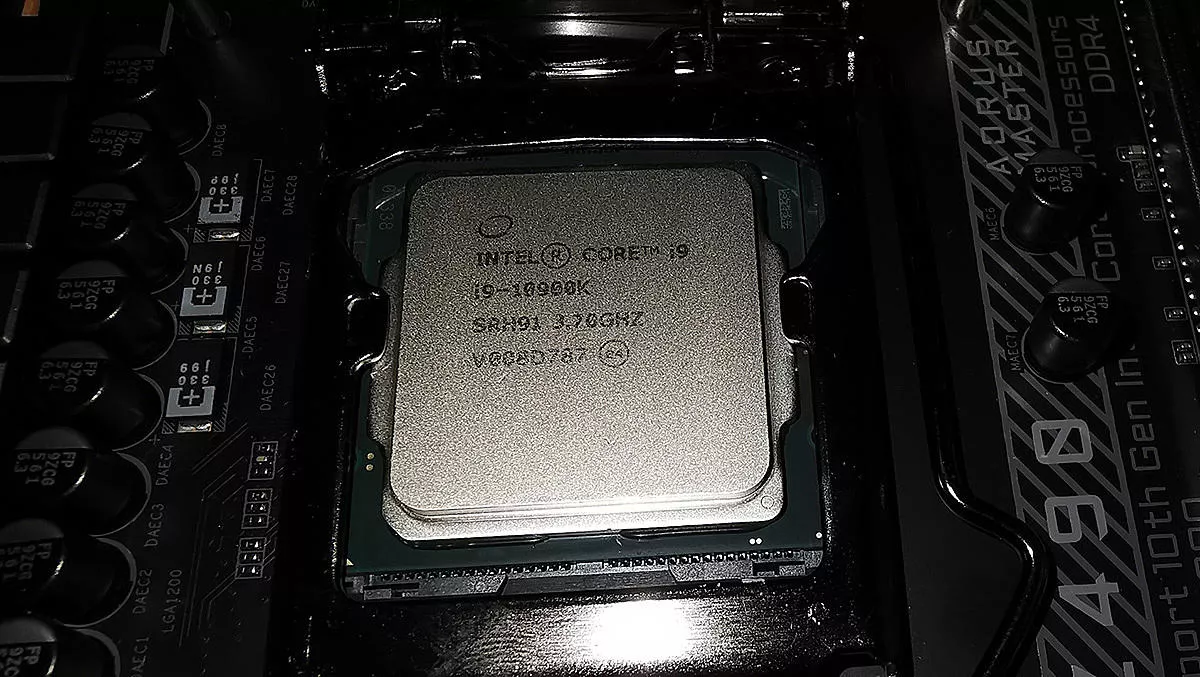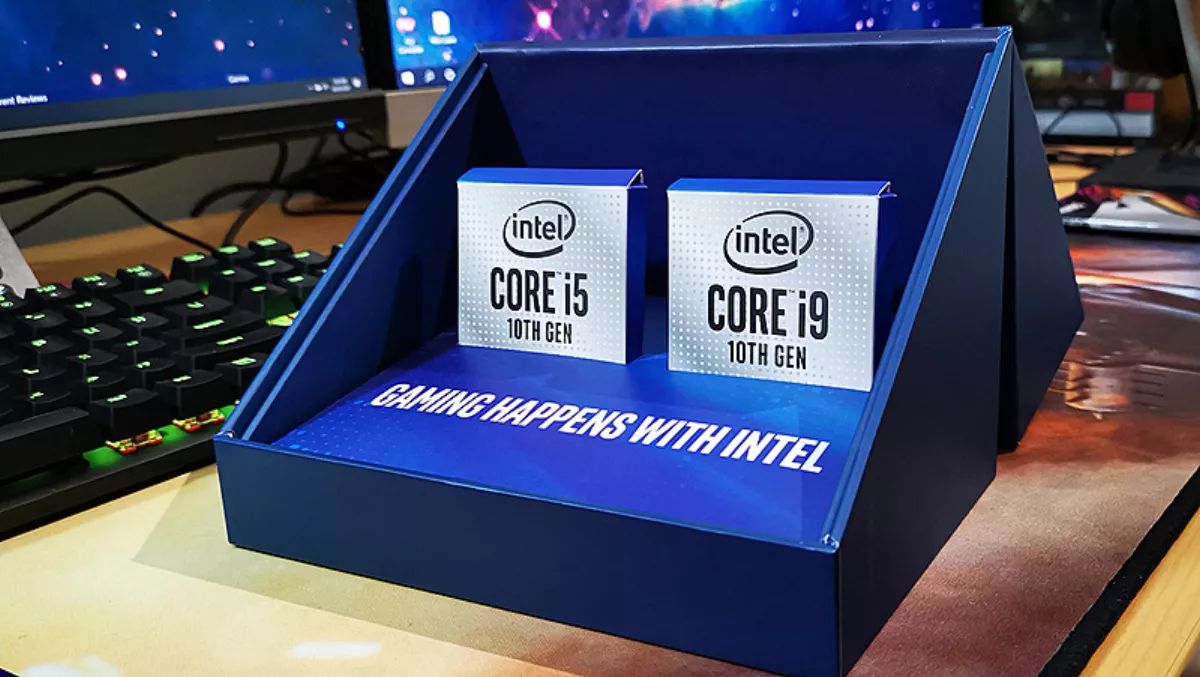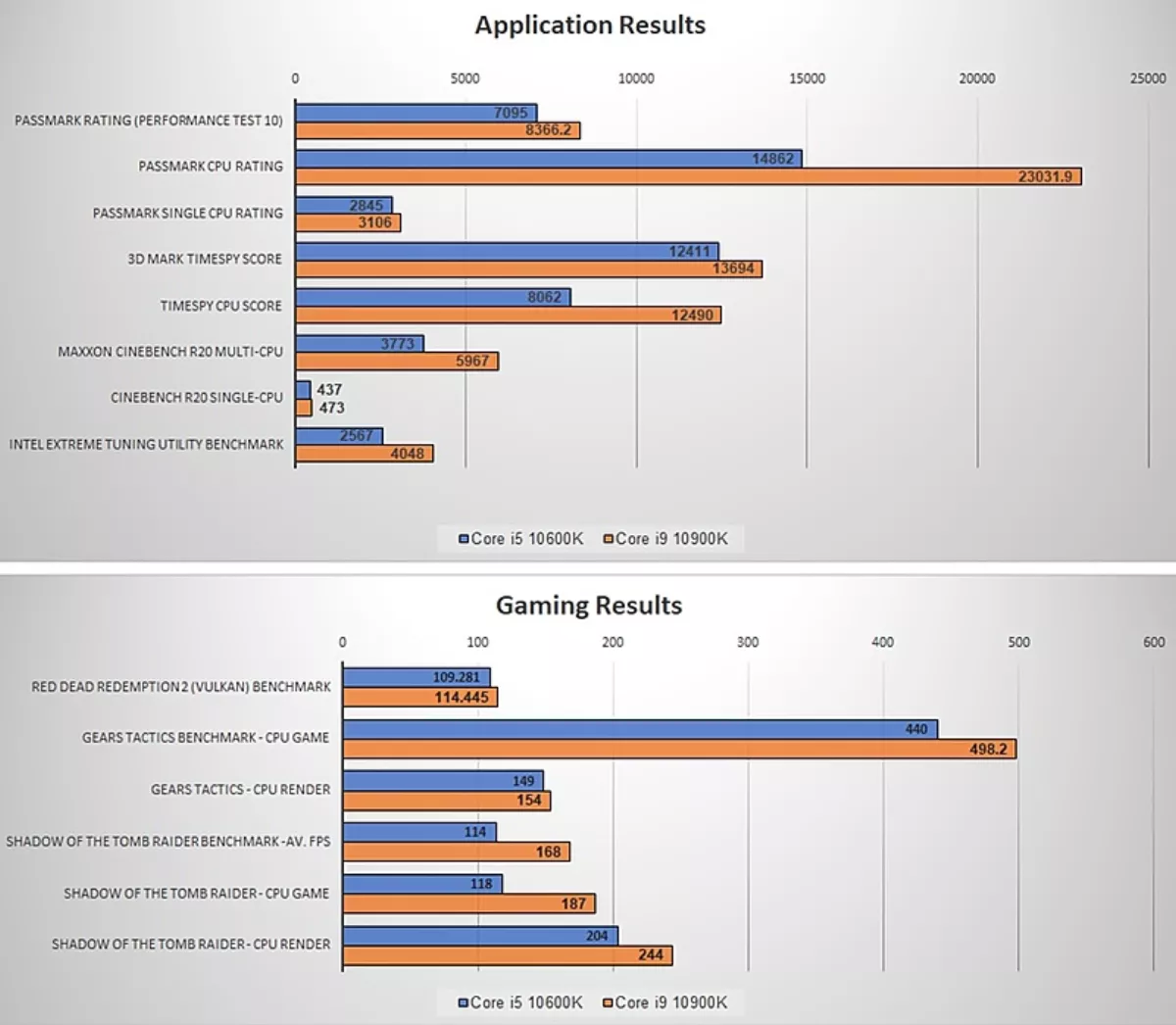
Hands-on review: Intel Core i5-10600K and Core i9-10900K
Intel's new 10th generation desktop CPUs are here. We've spent the last week taking a good look at the Core i5-10600K and the flagship i9-10900K.
The i5 and i9 Comet Lake microprocessors are based on Intel's 2015 14nm SkyLake microarchitecture. Anyone thinking of upgrading to the new CPUs by slotting in in their existing motherboard like we did with Intel's 300-series motherboards will be out of luck. Whilst the CPUs look almost identical, they require an LGA 1200 socket and a motherboard based around Intel's 400-series chipset.
We checked out the new CPUs with a top-of-the-range Gigabyte Z490 Aorus Master motherboard. The Z490 boards are the only motherboards that officially support overclocking the 10th generation Intel K-series unlocked CPUs.
The Core i5-10600K is a 6-core, 12-thread CPU. It has a base frequency of 4.1GHz with a maximum frequency of 4.8GHz for up to two active cores, 4.7 for up to four active cores and 4.5 for up to six active cores. Even with a modest AIO CPU water-cooler, I was able to get the i5 running at 4.8GHz with all six cores active.
The Core i5-10600K aimed squarely at the PC gaming market. The six cores providing just enough processing power to provide a premium gaming experience, at a reasonable cost.
The Core i9-10900K has ten cores and a whopping 20 threads. With a base frequency of 3.7GHz the i9 boosts to 5.3GHz across two active cores, 5.1GHz over three active cores, 5GHz over four to five active cores and 4.9GHz from six to ten active cores.

The i9 provides an amazing gaming performance. It is, however, unlikely that there are many, if any, games able to really make the most of those extra four cores over the i5. Considering that the i9 is double the price of the i5, you probably need to be doing something more than just playing games to justify the extra expense. Creative software, such as video editing and 3D rendering applications will likely give those extra cores the workout they need. So, if you are using your gaming rig for multi-core processor-intensive applications as well, the i9 will save you a lot of time and makes more economical sense.
Comparing the two CPUs side-by-side, it's easy to get seduced by the i9's 5.3GHz max frequency. It's worth noting, though, that two cores running at 5.3GHz is not better than ten running at 4.9GHz. In fact, the crafty way that Intel squeeze that extra performance out of the CPU means that you are not really likely to even see the i9 running at 5.3GHz at all. During my testing I only saw it running at 5.3GHz very briefly, the CPU mainly settling for 4.9GHz at the default settings.
The actual boost that the core get depends on factors such as load, power, heat and temperature and mandated by Intel's Turbo Boost Max Technology 3.0 and Thermal Velocity Boost. Turbo Boost Max Technology 3.0 uses AI to boost the cores based on their ability to take the extra frequency. Thermal Velocity Boost adds a bit more, as long as the core temperature is less than 70-degrees, to get to that quoted maximum frequency. Take into consideration that the CPU rarely works on just two cores and you can see why that 5.3GHz is so elusive.
I was able to force the i9 to run at 5GHz across all cores with no trouble. There's even a profile built into the Z490 motherboard called "CPU Upgrade" that adds +1 to the clock multiplier for the gaming profile and +2 if the advanced profile is selected. The stability of this basic overclock depends on the cooling solution used. But it certainly shows potential.
Both the i5 and i9 seem to have a bit of headroom for raising the all-core frequencies. Because that's what you are really after. It's certainly something I will be looking into in much more detail over the coming week as I drive into the innards of the Z490 Aorus Master motherboard.
I ran some benchmark tests on the i5 and i9. I compared the results with those of a similar system running a 2018 Core i9-9900K. From a gaming point of view, there's not much difference between the scores of the i5-10600K and the older i9-9900K. Of course, multi-core applications making good use of those extra two cores meant that the i9-9900K faired a bit better. The new i9-10900K, beat the others in every case.

The above results show the performance advantage that the i9 has of the i5, especially in the multi-core application tests. The GPU used with the CPUs was an Nvidia RTX 2080Ti. The game tests were carried out running at 1920x1080 resolution, v-sync off and no HDR. Both CPUs with the RTX 2080Ti are more than capable of running the likes of Call of Duty: Modern Warfare maxed out in 4K HDR with RTX shadows.
The Core i5-10600K seems a good gaming CPU, whilst the Core i9-10900K is a bit of an overkill for just gaming but is a real boost for multi-CPU applications. The Core i9-10900K is available for AU$999/NZ$1033 and the Core i5-10600K for AU$499/NZ$557.


